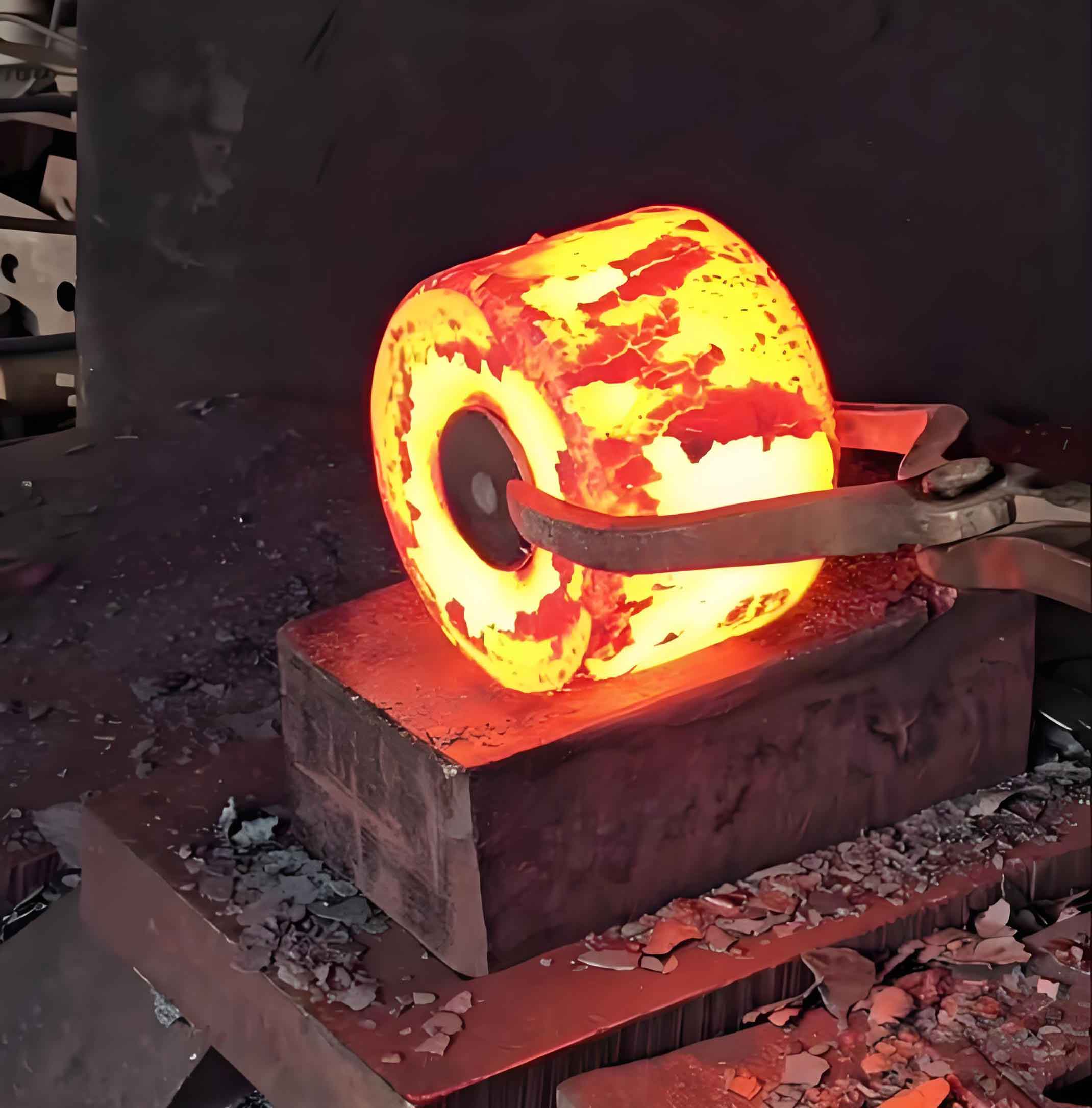Forging process optimization significantly impacts product quality and manufacturing efficiency. This study presents a methodology to minimize internal damage in forged gear blanks by optimizing initial height-to-diameter (H₀/D₀) ratios using finite element analysis and gradient-based optimization. The approach integrates the Cockroft-Latham damage model with numerical simulations to achieve superior mechanical properties in final components.
Material Damage Fundamentals
Material damage accumulation during plastic deformation governs fracture initiation. The Cockroft-Latham damage model quantifies fracture tendency through the damage integral:
$$ C = \int_{0}^{\varepsilon_f} \frac{\sigma^*}{\bar{\sigma}} d\bar{\varepsilon} $$
where \(\bar{\sigma}\) represents equivalent stress, \(\bar{\varepsilon}\) denotes equivalent strain, and \(\sigma^*\) is defined as:
$$ \sigma^* = \begin{cases}
\sigma_1 & \text{if } \sigma_1 \geq 0 \\
0 & \text{if } \sigma_1 < 0
\end{cases} $$
Fracture occurs when \(C\) reaches the material-specific critical damage value \(C_{crit}\). For forged gear blanks, minimizing maximum damage (\(D_{max}\)) enhances fatigue life and reduces failure risk.
Integrated Optimization Framework
The generalized reduced gradient method synchronizes with finite element simulations to optimize forging parameters. DEFORM™ software calculates damage evolution while the optimizer adjusts H₀/D₀ ratios to minimize \(D_{max}\). The workflow comprises:
- Define design space for H₀/D₀ (0.15–1.3)
- Execute thermo-mechanical simulation
- Extract net-forging damage distribution
- Compute objective function \(f(x) = D_{max}\)
- Apply geometric constraint: \(g = (V_i – V_s)/V_i \leq \epsilon\)

Mathematical Optimization Model
The optimization problem formalizes as:
$$ \begin{aligned}
\text{Minimize:} & \quad f(x) = D_{max} \\
\text{Subject to:} & \quad g(x) \leq \epsilon \\
& \quad x_{min} \leq x \leq x_{max} \\
\text{where:} & \quad x = H_0/D_0
\end{aligned} $$
Constraint \(g \leq 0.01\) ensures complete die filling. Forged gear blank material properties and process parameters:
| Parameter | Value | Unit |
|---|---|---|
| Material | 40Cr | – |
| Forging Temperature | 1000 | °C |
| Die Temperature | 300 | °C |
| Friction Coefficient | 0.3 | – |
| Heat Transfer Coefficient | 5 | W/(m²·K) |
| Ram Speed | 50 | mm/s |
Case Study: Forged Gear Blank Optimization
Optimization iterations demonstrate progressive damage reduction:
| Iteration | H₀/D₀ | Dmax | Constraint (g) |
|---|---|---|---|
| 1 | 0.85 | 0.94 | 0.003 |
| 5 | 0.62 | 0.67 | 0.001 |
| 10 | 0.45 | 0.41 | 0.000 |
| 15 | 0.37 | 0.36 | 0.000 |
| 21 | 0.35 | 0.35 | 0.000 |
Convergence history reveals a 65.35% damage reduction compared to initial designs. Optimal H₀/D₀ = 0.35 balances stress distribution and material flow, eliminating incomplete filling while minimizing damage in the forged gear blank.
Thermo-Mechanical Damage Evolution
Damage accumulation during non-isothermal forging follows the coupled relationship:
$$ \dot{C} = \frac{\sigma^*}{\bar{\sigma}} \dot{\bar{\varepsilon}} \cdot e^{-Q/(RT)} $$
where \(Q\) denotes activation energy, \(R\) the gas constant, and \(T\) instantaneous temperature. Optimized H₀/D₀ ratios reduce critical damage regions:
| H₀/D₀ | Max Damage | Critical Zones |
|---|---|---|
| 1.30 | 0.92 | Tooth root, flash area |
| 0.75 | 0.78 | Tooth profile, centerline |
| 0.35 | 0.35 | None |
Industrial Implications
Optimized forged gear blanks demonstrate enhanced service performance:
- 65% lower damage concentration in critical sections
- Elimination of incomplete filling defects
- 20% predicted improvement in fatigue life
- Reduced machining allowances through precise forming
The methodology demonstrates scalability for complex forged gear blank geometries and multi-stage processes, providing a scientific foundation for industrial forging parameter design.
